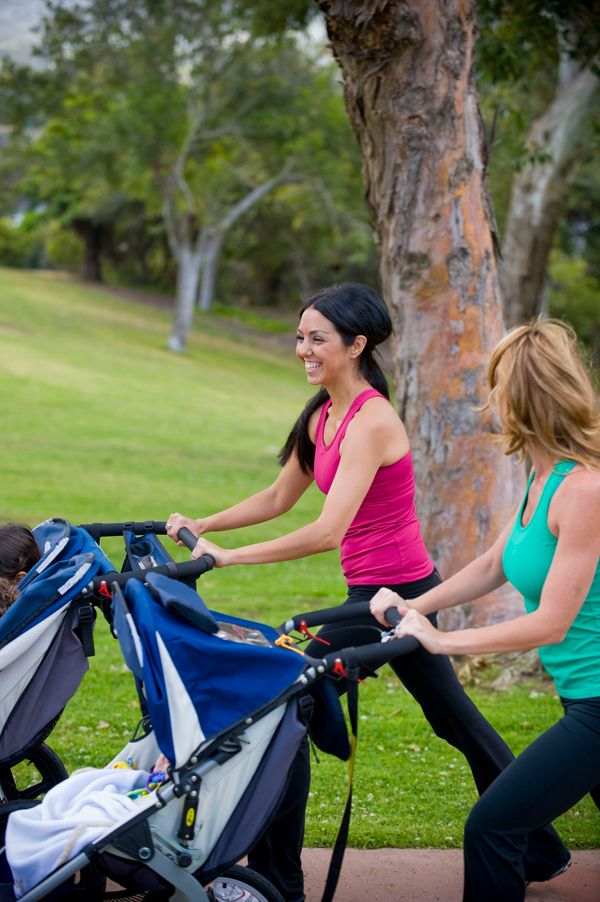It has happened to every postpartum woman. You finally feel like your body is ready to get back in shape after delivery and you decide to go on your first jog with baby with your awesome new jogging stroller. Next thing you know, there are new aches and pains you may have never experienced before. Chances are you made sure your jogging stroller fit baby, but forgot to make sure it fits you, too! American Physical Therapy Association (APTA) spokesperson Marianne Ryan, PT, OCS, a physical therapist specializing in women’s health, offers a few simple tips to help prevent pain and injury.

Safe Strides: Jogging Stroller Safety Tips
FIT4MOM CORP

Make sure your jogging stroller fits you. Look for a stroller that fits your height and promotes a comfortable stride. Parents commonly push a stroller by hunching over it, locking their elbows, and bending their wrists backward when holding the handlebars. Instead, try these tips:
· Keep your head and chin up, and your ears above your shoulders
· Keep your shoulders down and back, leading with your chest and staying as close to the stroller as possible
· Keep your arms slightly bent; don’t lock them
· Keep your wrists straight when you are holding the handlebars
· Engage your whole body, not just your arms, through all movements
All strollers should roll easily over terrain, but city dwellers, in particular, should look for a stroller that can easily navigate curbs. Moms and dads who run with a stroller should be careful to maintain good posture while running—don’t stand upright. Instead, lean forward, toward the stroller, while bending forward at the hips (not the back). Try to run close enough to the stroller that you needn’t reach forward and bend your back or crane your neck forward. Also, because of the repetitive jarring caused by running, physical therapists who specialize in women’s health usually recommend that women wear supportive shorts or undergarments for several months after delivery to prevent descending of the pelvic organs, known as pelvic organ prolapse. If necessary, consider buying an extender for your stroller handle to increase the height and ensure proper posture.
It’s also important to look for a lightweight jogging stroller, as lifting and carrying heavy objects can also be hard on the lower back, especially if done incorrectly. As you would do when lifting any heavy object, stand in front of the stroller when lifting, keeping the stroller as centered to your body as possible. Bend at your hips and not your back, and bring the stroller close to your body. Before you stand, push your feet into the floor, exhale, and contract your pelvic floor muscles (as if trying to stop 1 or 2 drops of urine). Then pivot with your feet (don’t twist your back) and stand. This ensures that your legs and hips, not your back, are doing most of the work.
Incorporate these tips into your routine to ensure you keep your body healthy and pain-free. Remember it is important to take care of mom too! Use the proper strengthening and exercising techniques, so that when you are finally ready to get back in action, an aching back doesn’t hold you back from achieving your fitness goals.
For more tips from Ryan join her for the #GNO Twitter party, How to be a Fit Mom with MomItForward on Wednesday, May 22 at 9 p.m. ET by following @MoveForwardPT and using the hashtags #GNO and #FitMom.
If you would like help learning correct body mechanics and making lifestyle modifications, seek the services of a physical therapist near you by visiting https://www.choosept.com/.
